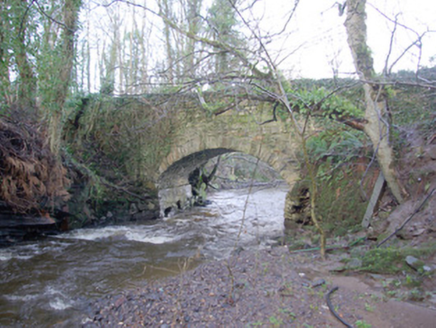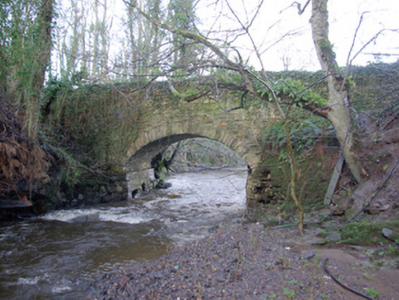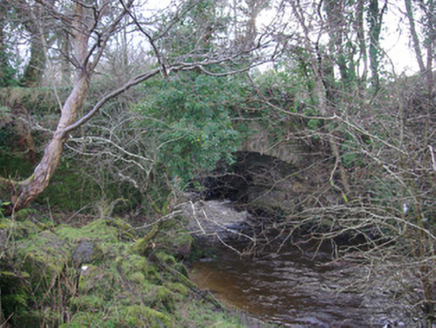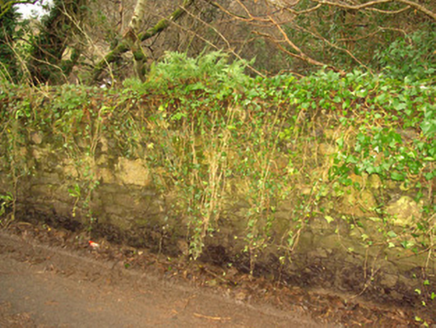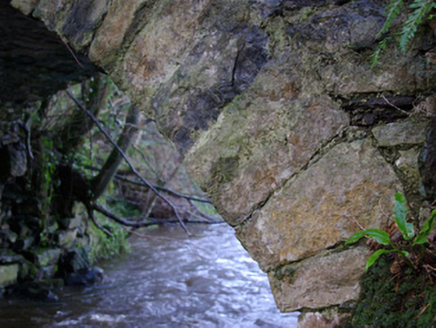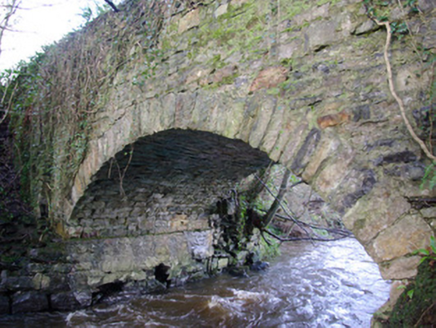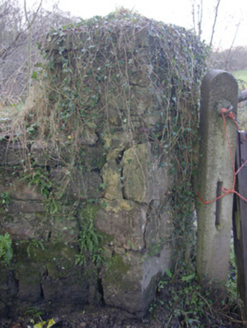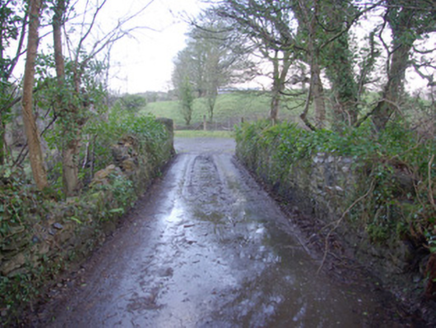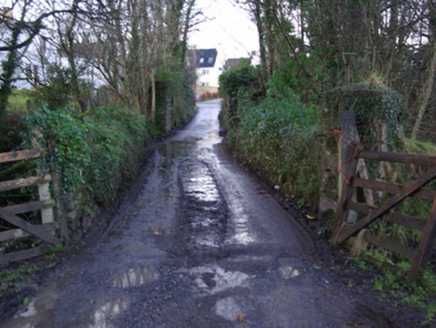Survey Data
Reg No
40843034
Rating
Regional
Categories of Special Interest
Architectural, Technical
Original Use
Bridge
In Use As
Bridge
Date
1780 - 1820
Coordinates
193841, 378072
Date Recorded
06/02/2008
Date Updated
--/--/--
Description
Single-arch bridge carrying small access road over the Drummeeny River, built c. 1800. Roughly dressed sandstone voussoirs to arch; squared rubble sandstone masonry to arch barrel. Random rubble stone construction to spandrels and to parapet. Tarmacadam to carriageway. Rubble stone gate pier (on square-plan) with pyramidal coping stone over to north-east corner of bridge, formerly gateway to Farmhill House to the east (not in survey). Single carriageway with tarmac deck. Bridge spans tributary of the River Eske. Snecked rock-faced piers and retaining walls of former narrow gauge railway bridge, c. 1889) carrying former Derry (Victoria Road) to Killybegs line over road adjacent to the east. Metal span carrying line now removed. Located in the rural countryside to the east/south-east of Donegal Town.
Appraisal
This simple but appealing single-arched road bridge retains its early character and form. It is robustly built using local rubble stone, and its survival in good condition is testament to the quality of its original construction and the skill of the local masons/craftsmen involved. It probably dates to c. 1800, a period when a great many small-scale bridges of this type were constructed throughout Ireland by the Grand Juries (the forerunners of the County Councils) etc. However, in this case, this bridge may have been originally built by a local landowner to provide access to Farmhill House (not investigated) a short distance to the east of this bridge. The remains of the piers to the former railway bridge (c. 1889) adjacent to the west adds to the context, and its construction using snecked rock-faced masonry provides an interesting juxtaposition with the earlier structure and an insight into the development of engineering technology and fashions during the nineteenth century. This modestly-scaled bridge is a good example of its type and date and is an addition to the built heritage of the local area, adding interesting to the rural landscape to the south-east of Donegal Town.
